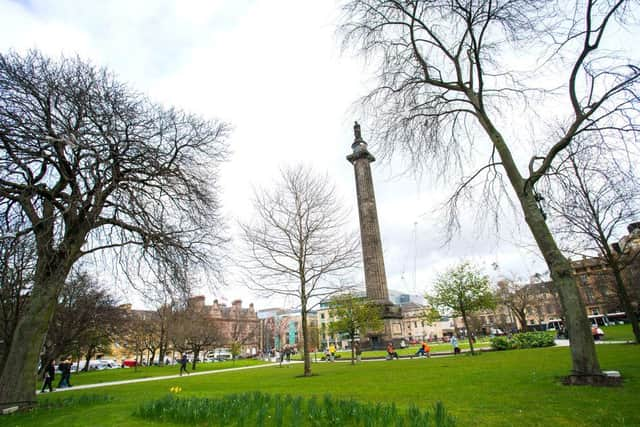Wording for plaque on Melville Monument in Edinburgh's St Andrew Square approved
Wording for a plaque to be placed on a controversial monument to an 18th century politician in Edinburgh City Centre detailing his links to the slave trade have been approved.
In light of global Black Lives Matter protests and renewed calls for the council to acknowledge Edinburgh’s more shameful past, the plaque aims to highlight Henry Dundas’ role in delaying the abolition of slavery.
Advertisement
Hide AdAdvertisement
Hide AdWording for the plaque was agreed upon on Tuesday by a panel comprising Edinburgh City Council Leader Adam McVey, Deputy Council Leader Cammy Day and the city’s first black professor, Sir Geoff Palmer.


Input was also received from Edinburgh World Heritage, Edinburgh University, Cllr Donald Wilson and Cllr Amy McNeese-Mechan.
The words read: “On the plinth at the centre of St Andrew Square stands a neoclassical column with a statue at the top. This represents Henry Dundas, 1st Viscount Melville (1742 – 1811). He was the Scottish Lord Advocate and an MP for Edinburgh and Midlothian, and the First Lord of the Admiralty. Dundas was a contentious figure, provoking controversies that resonate to this day. While Home Secretary in 1792 and first Secretary of State for War in 1796 he was instrumental in deferring the abolition of the Atlantic slave trade. Slave trading by British ships was not abolished until 1807. As a result of this delay, more than half a million enslaved Africans crossed the Atlantic. Dundas also curbed democratic dissent in Scotland.
“Dundas both defended and expanded the British empire, imposing colonial rule on indigenous peoples. He was impeached in the United Kingdom for misappropriation of public money and although acquitted, he never held public office again. Despite this, the monument before you to Henry Dundas was funded by voluntary contribution from officers, petty officers, seamen and marines and erected in 1821, with the statue placed on top in 1827.
“In 2020 this was dedicated to the memory of the more than half a million Africans whose enslavement was a consequence of Henry Dundas’s actions.”
Members of the Council's Policy and Sustainability Committee voted to approve a motion confirming the plaque wording 12 to six. The motion also includes affirmation that the council "agrees that Black Lives Matter and supports the Black Lives Matter campaign."
Conservative Cllrs Nick Cook and Iain Whyte expressed disappointment with the plaque's final paragraph, questioning its accuracy. Green Cllr Alex Staniforth similarly questioned the accuracy of the wording, however he also described them as "overly kind" toward Henry Dundas.
A Green Party addendum requesting the council Chief Executive bring forward a plan to "review any features within the council boundary which commemorate those with close links to slavery and colonialism", was approved.